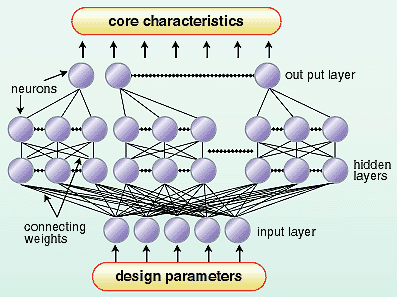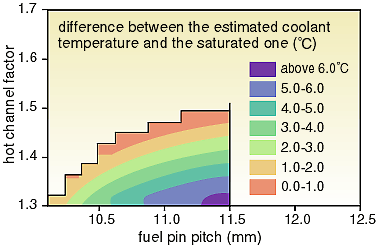The purpose of a reactor core design is to decide appropriate design
parameters such as shapes, dimensions, and materials of components and
their arrangement to satisfy required design criteria and performance.
In the conventional way, we must repeat the following design process;
defining a postulated design specification, calculating core performances
using analysis codes with the postulated specification and modifying
the design specification, until appropriate design parameters are found.
Under these circumstances, we need so much experience and time to carry
out this design process.
Recently, artificial neural networks have been used in various technological
fields. They imitate a human brain on a computer and give an accurate
output like the human brain as they accumulate training. The neural
networks, in which design parameters are set to their input signals
and core characteristics to their output signals respectively, can simulate
a response of an analysis code by training. Computation time can be
reduced by the use of neural networks instead of an analysis code, because
their response is very quick (Fig. 5-1).
In general, the more complex the structure of the neural network becomes;
that is, the more hidden layers and the more neurons installed in a
hidden layer, and also the more teaching data used for training, the
more accurate the predictive output which can be provided. However,
it is found from our present work that even a relatively simple structure
predicts sufficiently accurate output values. In the case of three design
parameters, computation time can be reduced by a factor of several dozens
compared with that of the conventional method. Figure 5-2 shows an example
of the application of neural networks to the thermal hydraulics field. |

